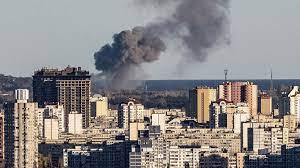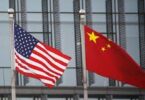Yasar Yakis
On Monday last week, the southern provinces of Turkiye suffered a major earthquake, the most devastating this century and one of the largest in Turkiye’s recorded history. The latest death toll from the earthquakes that hit Turkey and Syria is well over 20,000, but this figure is likely to increase as the rubble is removed.
Bearing in mind that about 40,000 dwellings must have collapsed and that an average household population will be about five persons per house in this region of Turkiye, we have to presume that a small portion of them were able to escape the catastrophe. The remainder must still be under the rubble. Turkish President Recep Tayyip Erdogan has announced a three-month state of emergency in the country with a view to carrying out rescue work.
The exact time of the earthquake was 04.17 Eastern European time (01.17 GMT), when almost everyone was sleeping, which contributed to the high death toll. Bad weather conditions exacerbated the problems. Sub-zero temperatures, rain and snow made the rescue work more difficult. Many victims may have frozen to death. Cohesion is very strong in Turkish society. This proved to be true on this occasion as well. Every organization, banks, football clubs and others, raced to contribute to the alleviation of the suffering. Every district of Turkiye was mobilized to bring whatever contribution it could to alleviate the victims’ suffering. This is likely to continue.
The international community has also demonstrated strong solidarity with Turkiye. It is generously helping with the rescue work. Countries that have political conflicts with Turkiye have put them aside and shown a willingness to help. A seven-day period of mourning has been announced by the government.
Frank Hoogerbeets, a Dutch researcher from the Solar System Geometry Survey, tweeted three days before the earthquake that “sooner or later there will be a 7.5 magnitude earthquake in this region (south-central Turkiye, Jordan, Syria, Lebanon).” It is difficult to tell whether this was a coincidence. Seven earthquakes of more than 7 magnitude on the Richter scale have taken place in Turkiye over the past 25 years. Despite this, little improvement in building standards has been achieved in practice. Some contractors added new floors to buildings that were originally designed for a limited number of floors, or they cut a supporting column of the building to make room for more space. Some reports by geologists’ associations in Turkiye were shelved because administrative procedures were not observed in submitting the reports.
On the day of the earthquake, one of the buildings publicized as compliant with “all earthquake norms” collapsed, demonstrating the reality of the situation. In another example, a recently adopted law pardoned irregularities committed in the construction of new buildings. Turning to the future, public opinion will look for more serious and concrete measures. Several attempts have been made in the past to improve the standards, but to little avail. In a country riddled with earthquake fault lines, the size of the task is gigantic, but the authorities shy away from assuming the responsibility. The challenge has two aspects. One is scientific. The government does not like to listen to scientists who insist that danger is around the corner. It considers them as defeatists. Therefore, it listens to the ones that are more moderate.
Second is the administrative aspect. Especially in the ruling Justice and Development Party era, a controversy emerged between the central authority and the municipal authorities. Because Erdogan began his political career as a mayor, he was once a strong supporter of devolving as much power as possible to the municipalities. However, after he became president, there was a sea change in his attitude. Now he wants to accumulate power in the hands of the central authorities. This was more visible in the case of big metropolitan municipalities. Therefore, a competition has developed between them and the central authorities in the area of construction and urban planning. Erdogan demonstrated his attitude by refraining from calling for condolences from the mayors of the municipalities held by the opposition parties. The mayor of Antakya – one of the areas worst-affected by the present earthquake – was complaining one day after the earthquake that he had warned of the danger but did not even receive an acknowledgement of his report.
Now, there is a bigger risk for Istanbul. There are all sorts of gloomy forecasts due to the size of the population in this metropolitan agglomeration. There are more substandard buildings than compliant ones. Successive Turkish governments have failed to answer the question of why skyscrapers in Japan do not collapse during an earthquake of more than 7 magnitude while in Turkiye they do.







